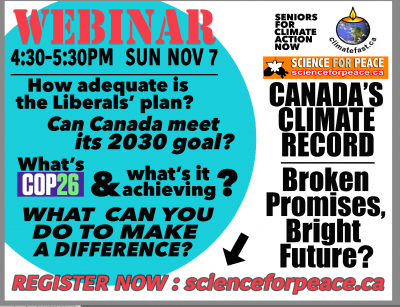What you can do with your postcards
If you received postcards from the Global Day of Action for Climate Justice on November 6th, 2021, here is what you can do with them:
Sign your name and add your postal code at the bottom and put it in any Canada Post mailbox (there is no need for a stamp). Space is provided for you to include a personal message to the Prime Minister about the Climate Crisis. While we would love for the government to hear Canadians’ suggestions and personal stories about how the Crisis is impacting them, this is optional.
Additional postcard designs are below. They can be downloaded to print and share with others. The more postcards sent to the Prime Minister, the clearer our demand for a meaningful and just transition from fossil fuels will be!
Postcard #1: We are here
Postcard #2: Greetings from Alberta
Postcard #3: Wish You Were Here
Postcard #4: Wish you were here BC
INSTRUCTIONS FOR PRINTING POSTCARDS
- Download the postcard template to your laptop or desktop. There are 4 postcards to each template.
- Open the template with your word processing app, e.g. Word, Google doc.
- Load sturdy paper into your printer. Do not use regular paper. Remember your postcard will be going through the postal system, and will be subject to wear and tear.
- Print the postcard template, specifying colour, double-sided and flipped on the short edge.
- Using scissors or a paper cutter, cut the printout into 4 separate postcards.
- Sign and provide your postal code. Drop in the nearest mailbox. No postage required. It’s on its way to our Prime Minister!
- Give your extra postcards to family members and friends, and ask them to do the same.
- Thanks for making a difference and helping to save our planet.
COP26
The United Nations’ Secretary-General called the latest Intergovernmental Panel on Climate Change (IPCC) climate report ‘Code Red for Humanity’, stressing:
The alarm bells are deafening, and the evidence is irrefutable: greenhouse‑gas emissions from fossil-fuel burning and deforestation are choking our planet and putting billions of people at immediate risk. Global heating is affecting every region on Earth, with many of the changes becoming irreversible.
(source)
With recent extreme weather events and new promises made by the federal government, we must hold our leaders accountable at the upcoming COP26 climate negotiations. The time for business as usual and empty promises is over. We need real action at COP26!
What is COP26 anyway?
For nearly three decades, the United Nations has been bringing together leaders, negotiators, government representatives, corporations, and citizens from almost every country on earth for global climate summits called the Conference of the Parties (COP). This year will be the 26th annual summit (COP26), taking place in Glasgow.
Many believe COP26 is the world’s last best chance to commit to a real fight against the Climate Crisis.
The goals of COP26 are to:
- Secure global net zero emissions by 2050 and keep 1.5 degrees of warming within reach.
- Adapt to protect communities and natural habitats.
- Mobilize trillions of dollars required to secure global net zero emissions.
- Work together to deliver.
Why is COP26 so important?
In 2015, COP21 took place in Paris, where the Paris Agreement was born. For the first time ever, every country agreed to work together to limit global warming to 1.5 degrees, to adapt to the impacts of the Climate Crisis, and that developed countries with historically high emissions would provide funds to deliver on these aims. Under this agreement, countries committed to bringing forth national plans setting out how much they would reduce their emissions, known as Nationally Determined Contributions (NDCs). Every 5 years, they would update their plans to reflect their highest ambition at that time. COP26 is the summit where countries must update their plans (delayed by a year due to the COVID-19 pandemic).
Crucially, the Paris Agreement did not come close to limiting global warming to 1.5 degrees. The latest United Nations Environment Programme report on the Emissions Gap" states:
Pathways reflecting current NDCs (Nationally-Determined Contributions) imply global warming of about 3°C by 2100, with warming continuing afterwards. If the emissions gap is not closed by 2030, it is very plausible that the goal of a well-below 2°C temperature increase is also out of reach (UNEP, 2018, p. 4).
At COP26, countries must commit even more to urgent and decisive action to keep warming to 1.5 degrees.
What we need from our leaders
What we need from our leaders are:
- The phasing-out of our reliance on fossil fuels to renewable, zero or low-carbon energy sources.
- A just transition for communities and workers, centered around those most affected by the Climate Crisis and the phasing-out of fossil fuels.
Fossil Fuel Non-Proliferation Treaty
The Paris Agreement does not reference coal, oil, or gas as main contributors to emissions although they make up three-fourths of human-caused emissions (source).
Therefore, just as 50 years ago, the world needed a treaty to defuse the threat of nuclear weaponry, today, we need a Fossil Fuel Non-Proliferation Treaty (FFNPT). The FFNPT aims to complement the Paris Agreement by directly addressing the fossil fuel industry. Canadians are calling upon our elected officials to endorse the call for a treaty and support its passage at COP26.
The phasing-out of fossil fuels must provide real solutions and a just transition for every worker, community and country. As we transition away from fossil fuels to cleaner sources of energy, the government must ensure an equitable and prosperous future for workers and communities.
Actions you can take
While the changes that need to occur may seem overwhelming and beyond the scope of an individual, there is so much we can do to foster a healthier, more just and fossil free future:
1. Educate yourself. There are lots of great websites, podcasts, newsletters, and books on the Climate Crisis and solutions. Here is a good place to start:
This jointly-sponsored one-hour webcast, taking place on November 7th at 4:30 to 5:30 pm ET, assembles six experts to reflect on Canada’s climate record and future performance in the context of the COP26 climate summit in Glasgow.
2. Talk to your family and friends.
3. Communicate with your elected officials. Your voice matters and government officials need to understand that we demand changes.
4. Join a group. There are lots of NGOs that are focused on the Climate Crisis. By joining one (or a few) of them, you are amplifying their message, can tap into their resources, and help promote change at a faster pace. For example, you can join ClimateFast.
5. Use the power of the purse. By choosing more sustainable products with a lower carbon footprint, you are sending a message to corporations that the old way of doing business is not what we want anymore.
Here is a handy table with links to where you can get more information and start taking action now!
Some climate terms to familiarize yourself with:
Anthropogenic climate change
Man-made climate change - climate change caused by human activity as opposed to natural processes. (source)
Fossil Fuel Industry
Fossil energy sources, including oil, coal and natural gas, are non-renewable resources that formed when prehistoric plants and animals died and were gradually buried by layers of rock. Today, fossil fuel industries drill or mine for these energy sources, burn them to produce electricity, or refine them for use as fuel for heating or transportation. Over the past 20 years, nearly three-fourths of human-caused emissions came from the burning of fossil fuels. (source)
Intergovernmental Panel on Climate Change (IPCC)
Created in 1988, the IPCC is an organization of 195 governments that are members of the United Nations and the the World Meteorological Organization. The objective of the IPCC is to provide governments at all levels with scientific information that they can use to develop climate policies. IPCC reports are a key input into international climate change negotiations. For more information, visit the IPCC website.
Nationally Determined Contributions (NDCs)
Under the Paris Agreement, countries are required to submit national greenhouse gas emission reduction targets, known as NDCs, every five years. Each successive NDC is required to be more ambitious than the previous one. NDCs embody efforts by each country to reduce national emissions and adapt to the impacts of climate change in order to achieve the long-term goals of the Paris Agreement. For more information, visit the UNFCCC website.
Net Zero Emissions
Net zero refers to a state in which the greenhouse gases going into the atmosphere are balanced by removal out of the atmosphere. (source)
NGO
A non-governmental organization (NGO) is a non-profit group that functions independently of any government. NGOs, sometimes called nonprofits or civil societies, are organized on community, national and international levels to serve a social or political goal such as humanitarian causes or the environment.
source)
Paris Agreement
This international agreement on climate change was reached in December 2015. It falls under the United Nations Framework Convention on Climate Change (UNFCCC) dealing with greenhouse gas emission reductions, adaptation and finances. Its aim is to limit the rise in the global average temperature to less than 2 °C above the pre-industrial average and, ideally, to no more than 1.5 °C. (source)
Parts per million
In the context of the Climate Crisis, ppm is a measurement of how many parts of carbon dioxide (a major greenhouse gas largely from the burning of fossil fuels) there are in one million parts of air. So, if carbon dioxide is at 100 ppm, that means in one million particles of air, there are 100 particles of carbon dioxide. Experts consider 350 ppm of carbon dioxide to be safe. As of September 2021, we are at 417 ppm of carbon dioxide (source).
Renewable energy
Renewable energy is energy created from sources that can be replenished in a short period of time. The five renewable sources used most often are: biomass (such as wood and biogas), the movement of water, geothermal (heat from within the earth), wind, and solar. (source)

